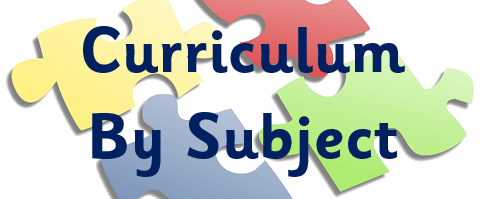Curriculum Statement |
Learning at Carr Hill |
Curriculum Intent

At Carr Hill Primary School, our aim is for all children to be able to develop a vision of their future and an awareness of the opportunities to help them realise this. We aim for every pupil to leave with a sense of pride that they have developed the confidence, skills and general knowledge needed to achieve success. Our curriculum provides opportunities for children to develop as independent, confident and successful learners, with high aspirations, who know how to make a positive contribution to their community and the wider society.
Our intention is that our curriculum opens children’s eyes to the world within and beyond their immediate environment and its possibilities and helps them to make connections with their own lives. The overarching theme of ‘A World of Possibilities’ connects learning across subjects throughout each year, helping children to make links to possible jobs, travel, hobbies and community work they may aspire to in the future. Enrichment activities, such as trips and visitors enhance and build on our pupils’ ‘cultural capital’, offering experiences that many of our pupils wouldn’t otherwise have access to. We aim to widen pupils’ opportunities and inspire all of our children to gain the knowledge and skills they will need to achieve the future they aspire to.
Fostering a love of reading and widening our children’s vocabulary is the key to their academic achievement and, therefore, a central aim in our curriculum.
We aim to encourage and enable our children to live happy, healthy and productive lives. Central to our ethos at Carr Hill, we actively teach children to understand themselves as learners, build resilience and develop a positive mindset.
Our curriculum is designed to provide the foundations of learning from the outset, in the Foundation Stage, so that building blocks can be cemented and strengthened through deliberately repeating learning and making links to past and current learning across the curriculum. Our lesson design, knowledge categories and subject progression maps ensure progression is secured and knowledge is retained in long term memory.
Through #learningeverywhere we aim to provide opportunities for our pupils to build on their general knowledge, knowledge of culture and of the wider world as they move around school.
Taking into consideration what we know and understand about the needs of our school community and locality, the breadth of our curriculum is designed with four goals (drivers) in mind:
 |
To support and enable pupils in developing and flourishing into happy, engaged and motivated learners. |
| To provide a coherent, language rich curriculum, underpinned by PSHE, in order for pupils to apply knowledge and approach appropriate challenges with confidence. |  |
 |
To give pupils a breadth of experiences to develop as confident, responsible citizens. |
| To provide all pupils with a background knowledge of the wider world so that they value diversity and are able to gain a greater understanding and make links to their own world. |  |
Curriculum Ethos and Implementation
Key Foci for Curriculum Development

To develop an engaging, coherent, structured curriculum, underpinned by PSHE, so that pupils are able to apply knowledge and approach appropriate challenges with confidence, making good rates of progress and achievement across the curriculum (knowing more and remembering more).
Underpinned by the four drivers our curriculum sets out:
a) a clear list of the breadth of topics that will be covered;
b) the ‘threshold concepts’ pupils should understand;
c) criteria for progression within the threshold concepts (milestones);
d) criteria for depth of understanding.
We recognise that Maslow’s Hierarchy of Needs must be addresses in order for children to reach their potential.

In addition to this, we also understand that learning is invisible in the short-term and that acquiring sustained knowledge and understanding takes time and is dependent on the above.
The diagram below shows model of our curriculum structure from September 2020.

a) The curriculum breadth for each year group ensures each teacher is clear about what content should be covered. As well as providing the key knowledge within subjects, it also provides opportunities for pupils’ growing cultural capital.
b) Threshold concepts are the key disciplinary aspects of each subject. They are chosen to build conceptual understanding within subjects and are repeated many times in each topic.
c) Milestones define the standards for the threshold concepts.
Implementation
Our curriculum design is based on evidence from cognitive science; three main principles underpin it:
1) learning is most effective with spaced repetition.
2) Interleaving helps pupils to discriminate between topics and aids long-term retention.
3) Retrieval of previously learned content is frequent and regular, which increases both storage and retrieval strength.
In addition to the three principles we also understand that learning is invisible in the short-term and that sustained mastery takes time.
Continuous provision, in the form of daily routines, replaces the teaching of some aspects of the curriculum (for example, telling the time) and, in other cases, provides retrieval practice for previously learned content.
Impact
The intended impact of our curriculum is that by the end of each Milestone, the vast majority of pupils have sustained mastery of the content, that is, they remember it all and are fluent in it; some pupils have a greater depth of understanding. We track carefully to ensure pupils are on track to reach the expectations of our curriculum and that they are knowing more and remembering more over time.
Teachers use a variety of methods of measuring progress (lesson re-caps, quizzing, work within lessons, assessed pieces of work, testing) and attainment, making assessments in the short-term (within lessons) and termly.

If you require any further detail about our school’s curriculum, please speak to your child’s class teacher or email the school office and a member of staff will be in touch.



